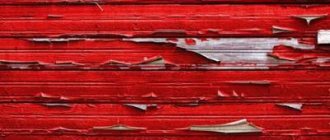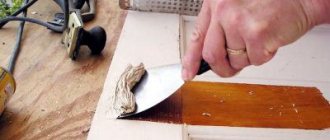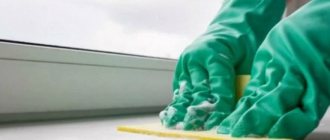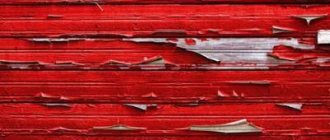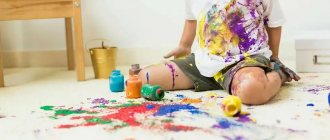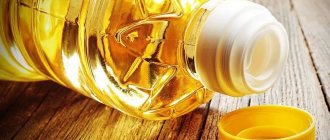Removing paint from a wooden surface without damaging it is not an easy task, but you can cope with it if you know some of the features of the work.
There are several methods to achieve your goal. Paint is removed mechanically, thermally and chemically, each of which has its own advantages and disadvantages.
You can learn how to remove old paint from wood at home from this article.
How to properly prepare for upcoming work?
It is wrong to immediately start removing paint from wood. First you need to prepare. Depending on the cleaning method chosen, the following tools and accessories may be required:
personal protective equipment: goggles, gloves, mask, respirator;- rags;
- spatula, sandpaper;
- construction hair dryer;
- drill or grinder;
- grinding machine and attachments;
- solvent.
When all the tools are collected, you need to think about the following points:
- Place of work . If a chemical cleaning method is intended, then it is best to do it outside or in a room with good ventilation.
- Protection of surrounding objects and surfaces . They need to be covered with unnecessary cloth or plastic wrap.
- Ease of access . If there is such a need, then the object being cleaned must be moved in advance.
- Thickness of paint coating . If the layer is thin, then new paint can be applied directly to it, without preliminary cleaning. It is better to remove thick coating. The preferred method is mechanical cleaning.
- Recency of coating application . The old layer of paint can be easily removed from wood, so it should not be left behind. Otherwise, the new coating will lie unevenly and will peel off.
If the surface of the product is ribbed or has a complex topography, then preference should be given to the chemical method.
Why do you need to remove old paint?
Why remove old paint when you can just paint on top? It is possible from above, but not always. Here are some compelling arguments:
- Old paintwork may have a composition that is not compatible with new paint. Rejection can be expressed in swelling of the old layer and detachment of the new one. Incompatibility occurs on a chemical level when the relationships between paint molecules simply don’t “gel.”
- The previous layer of paintwork may have unevenness, cracks and chips. If you cover this “beauty” with a new layer on top, you will undoubtedly get a textured surface akin to trendy design solutions. But the difference is that even the most ridiculous design moves are often accompanied by carefully thought-out coating technology. And a painted old peeling wall is unlikely to bring you aesthetic satisfaction.
- Paints, to a greater or lesser extent, have the property of hiding power. There are denser opaque compositions and liquid ones that need to be applied in 2-3 layers. So, it’s unlikely that you’ll be able to paint a dark brown window sill with white paint the first time.
- Mold often grows in wood cracks. Fungal spores are dangerous to health, and the mycelium destroys the structure of the wood. Therefore, it is at least not wise to use a wooden coating without pre-treatment. By peeling off the paint layer, the affected areas are simultaneously removed. And antifungal disinfection prolongs the life of wooden structures.
Which option should you prefer?
When giving preference to one or another method of cleaning, you need to start from the specific task that a person faces, namely:
- If the surface needs high-quality treatment, then two methods are combined: first, the object is treated with a professional solvent, and then the areas are cleaned manually.
- If you need to save money, clean it using sandpaper or using foil and an iron.
- When safety comes to the fore, dry cleaning is chosen.
If a person has enough time to carry out the work, then several methods can be used simultaneously: apply a chemical remover, and then clean off the remaining paint manually.
Methods for removing paint
A desperate craftsman with his own hands can clean the facade of a country house, renew oak doors, and seal window sills. The main thing is to choose the appropriate method.
According to the technique of influencing the surface, there are 3 methods:
- Mechanical removal of coating using abrasive and sharp tools.
- Erasing paintwork materials through physical exposure to high temperatures.
- Dissolving paint with chemical compounds.
We recommend using the proposed methods in combination. First, remove the general coating using one of the simplest methods, and clean difficult areas using another method.
The wood cleaning methods we offer have been tested and are available. And first, let's look at what tools will be needed to perform this or that method.
Features for different types of dyes
Depending on the type of dye, the methods for removing it will vary:
oily compounds can be easily cleaned off with a spatula or grinder;- water-based paints are susceptible to solvents;
- acrylic paint can be cleaned off mechanically or chemically;
- powder paints are washed off with a powerful stream of water, for example, from a high-pressure washer;
- Hair dye that gets on a wooden surface can be washed off with an alcohol solution.
It is most effective to remove several layers of different paint using the thermal method.
Prevention
To prevent the lining from turning black and deforming, it is enough to follow a few simple recommendations:
- if the facade of a building is covered with wooden clapboard, then it must be fixed at a short distance from the surface to be improved;
- after covering a wall, floor or ceiling with special boards, the building material must be processed (primed, varnished, painted, etc.);
- in a room lined with clapboard, you need to equip a good ventilation system;
- if it is impossible to install fans, regularly ventilate the room;
- Once every six months, the cladding board must be impregnated with a special protective compound, which minimizes the risk of mold and mildew and protects the building material from precipitation (how to treat lining with protective agents?).
And lastly: the higher quality lining is used for interior or exterior decoration, the less time and effort will be needed in the future to return the cladding board to its original appearance.
Lining is a finishing material that is a thin cladding board. It can be used for external and internal decoration of residential premises. After all, thanks to its ecological origin, the lining is safe for everyone living in the house.
But, like any other building material, such a board has its drawbacks; it can be difficult to clean it from dirt. How to clean the lining and not spoil the structure of the board? Let's take a closer look.
The most common mistakes
The most common mistakes people make when trying to remove paint from wood surfaces are:
- Applying chemicals to the entire area at once. If the composition is used for the first time, then first you need to treat a small area.
- Cleaning wood with too hard brushes or rough abrasive attachments. They can lead to rock destruction.
- Long-term exposure of removers and solvents on a wooden surface. Even the most expensive and effective washes can lead to damage to the product. Therefore, leaving them for longer than 1-2 hours is not recommended.
- Overheating of the surface when trying to remove paint using a thermal method. This situation is a fire hazard.
- Using plastic containers when working with washes. Aggressive compounds can lead to their damage.
Regardless of the cleaning method you choose, you should carefully read the instructions for its use.
Mechanical restoration
The simplest and most accessible method is considered to be mechanical. There's nothing easier than picking up a power tool and scraping off old paint. It is necessary to take into account that you will have to work in protective clothing that hinders movement.
When removing one layer of paint from smooth objects, they resort to tools with abrasive attachments in the form of a circle. You should pay attention to the grain of the wood, as abrasiveness that is too harsh can destroy soft wood.
Important! Do not press the device too hard to avoid damaging the surface being treated. It is necessary to start with light touches to the wood, then gradually increase the pressure.
Processing the product with sandpaper
This method is excellent for removing a thin layer of paint from a small piece of wood. Sandpaper is not suitable for removing paint particles from hard-to-reach places. It requires a large number of sheets of sandpaper and patience on the part of the person involved in this process. The cost of sandpaper is low, so this method is considered the least expensive.
The first step is to sand the surface with a coarse abrasive to remove the top layer. Then, during the cleaning process, the abrasive is replaced with a fine one and the wooden product is completely smooth.
To make sanding easier, you can wrap a rectangular block in paper.
The advantage of sandpaper is not only the price of consumables, but also the low probability of damage to the object being processed due to control over the degree of pressure.
Cleaning the product with an angle grinder (angle grinder)
When using an angle grinder, precautions must be taken to avoid injury. The device should not be used at full speed to avoid damaging the object being processed.
To work with this device you will need an emery flap disc. During the process, you should take a stable position and hold the machine by both handles to prevent the angle grinder from falling out of your hands. The discs should be changed promptly because they become clogged with sawdust.
It is better to leave the last layer of paint for manual processing with sandpaper, and wipe off the remaining dust with a damp cloth.
Using a drill
With this method, the tool is held strictly perpendicular to the surface being treated and moved slowly, removing each layer in turn. The pressure force increases gradually.
Important! Mucous membranes should be protected from dust particles formed during cleaning of the paint layer.
The advantage of the method is the speed with which the painted layers are removed from small products. In addition to the drill itself, you will need special sanding attachments that remove paint without harming the wood.
We recommend:
How to clean suede
Hard paint brushes
To strip wood, metal cord brushes are used, which easily cope with their task. If pressed excessively, they can damage the soft structure of the wood, so you should resort to this method only in extreme cases.
The advantage of brushes is the ability to treat hard-to-reach places.
Important Tips
To ensure that the process of removing paint from wood is effective and safe, the following recommendations must be followed:
Do not press on the surface of the product with great force. This is true for the mechanical cleaning method.- Always use personal protective equipment.
- Protect floors and surroundings with plastic film.
- Do not heat the wall in the area of wiring and electrical appliances.
- After applying the remover, the surface must be washed with clean water.
- If aggressive substances come into contact with the skin or mucous membranes, rinse them immediately with plenty of water.
By following these recommendations, you can efficiently remove paint from any surface.
Chemical paint removal
Using special washes is an effective, but not always budget option. In addition, to avoid poisoning, you should remember the safety rules when working with toxic substances.
Manufacturers of quality removers guarantee safety and high efficiency when removing old paint. The chemical composition softens the paint without damaging the wooden base.
The operating principles of all wash products are identical. The difference is observed only in the speed of the paint dissolution reaction and the comfort of removing the softened coating.
Thus, the Russian-made Destructor composition performs its function of dissolving paintwork materials, but at the same time turns the paint into a sticky, stretchy substance that is difficult to clean off from the surface. The product has a blue-green color, the pigment from which penetrates into the wood layer. It is recommended to wash off any remaining product with a solvent.
Manufacturer Dufa offers Abbeizer. It is applied to the surface in a thin layer and after 3 minutes the paint begins to bubble. The coating can be easily removed with a construction spatula. The cleaned wood is wiped with water.
We list similar working washes:
- Medium "Prestige". Gel-like substance with a pungent odor. Removes paint layer by layer. Exposure time is 5-10 minutes.
- Paint destroyer Vershina B-52. Gel based on chemical solvents. It deals with the coating layer by layer, so it requires a lot of consumption.
- Solvent 646. Regular solvent removes thin layers of paint. Inconvenient to apply - liquid texture. We recommend using it in small areas.
- Syntilor Hard paint remover. A gel-like fast-acting product that works on almost all types of paintwork materials. Works worse with acrylic coating. Removes paint layer by layer. It has a strong odor and causes burns if it comes into contact with skin.
- "White House". A gel that begins to corrode old paint after 10 minutes. Residues are removed with acetone.
All of the above products are aggressive towards plastic, so we recommend covering plastic parts.
Prevention
To prevent the lining from turning black and deforming, it is enough to follow a few simple recommendations:
- if the facade of a building is covered with wooden clapboard, then it must be fixed at a short distance from the surface to be improved;
- after covering a wall, floor or ceiling with special boards, the building material must be processed (primed, varnished, painted, etc.);
- in a room lined with clapboard, you need to equip a good ventilation system;
- if it is impossible to install fans, regularly ventilate the room;
- Once every six months, the cladding board must be impregnated with a special protective compound, which minimizes the risk of mold and mildew and protects the building material from precipitation (how to treat lining with protective agents?).
And lastly: the higher quality lining is used for interior or exterior decoration, the less time and effort will be needed in the future to return the cladding board to its original appearance.
Wooden lining is a beautiful, natural material. It is not surprising that so many users around the world prefer it as a finishing and facing material.
The environmental friendliness and natural beauty of wood not only decorates the room, but also creates a certain microclimate in it. And the lining covered with a thick coating (paint, varnish) allows you to create any decor.
But wood has a significant disadvantage that affects the performance characteristics of the lining - it is subject to rotting, various damage, and also tends to darken.
This article is intended for those who want to protect and at the same time preserve the lining in its natural form. Let's consider step by step how and what is the best way to coat (impregnate, treat, paint) wooden lining (euro lining).
I must say that the “take a brush, paint and paint” method is good precisely because of its simplicity. But how long will wood painted this way last? Wouldn't it be better to take a more thorough and correct approach?
Proper painting of wooden lining consists of 4 stages:
